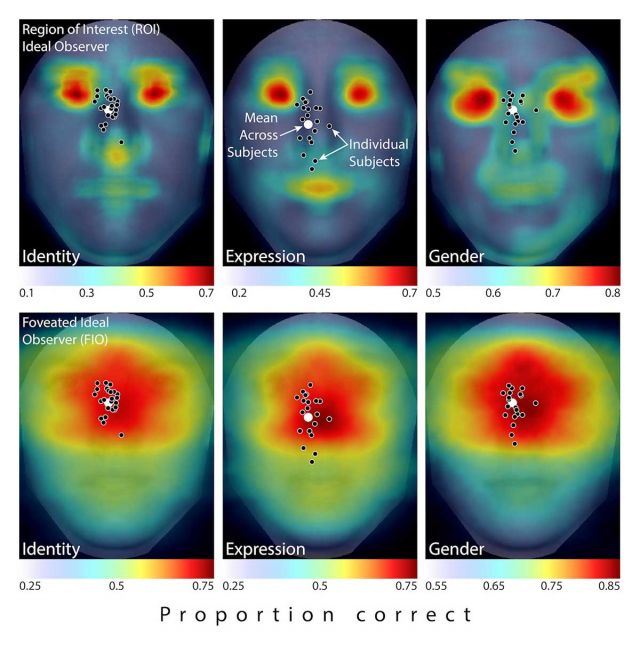Face Perception

Our elaborate social structures provide us with the unique ability to flexibly coordinate the efforts of multiple people to master novel tasks that no one person could accomplish alone, a faculty that has allowed humans to survive--and often thrive--in every environment on Earth (and beyond). This extraordinary ability hinges on quick and accurate individual-specific attribution of another person's physical, emotion, and psychological states and traits. These complex attributions--differentiated by nuanced distinctions--must often be computed indirectly, making it unsurprising that we rely heavily on the powerful and highly-elaborated machinery of the human visual system to make these critical inferences that are as complex and nuanced as the attributes themselves.
The human face, in particular, provides perhaps the richest source of the visual information that we use to infer the states and traits of others. The gleaning of information about a person's identity, sex/gender, emotion, and many other intentions and internal states, often within a single glance, is arguably one of the most practiced and important perceptual tasks we perform. Our research uses eye tracking, psychophysics, computational modeling, and neuroimaging to uncover the sophisticated brain algorithms that allow for this incredibly fast and automatic face recognition, and to understand how these systems develop within individuals and differentiate into the personalized, distinct mechanisms we see see in adults.